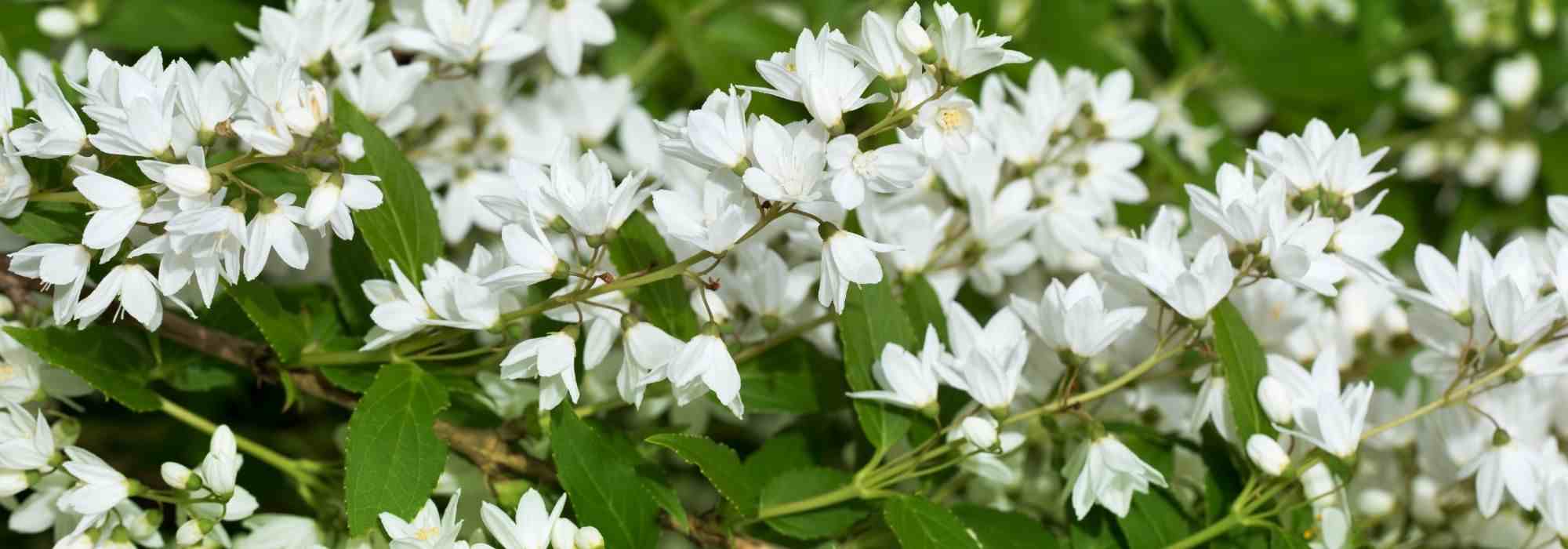
Deutzia: 5 lovely pairing ideas
well associating deutzia in the garden
Contents
Deutzias are beautiful bushes with delicate spring flowering, offering a profusion of star-shaped flowers in white, pale pink, or bright pink depending on the variety. Easy to grow and resilient, deutzia thrives in both sun and partial shade. Unfussy, it adapts to all types of fresh soil. With its reasonable size, compact habit, and airy flowering, deutzia is ideal for borders and in free-flowing or mixed flowering hedges. It will perfectly enhance an English-style garden or a cottage garden, as well as in a romantic ambiance garden or simply wild.
Discover how to enhance your deutzias alongside other perennials or bushes.
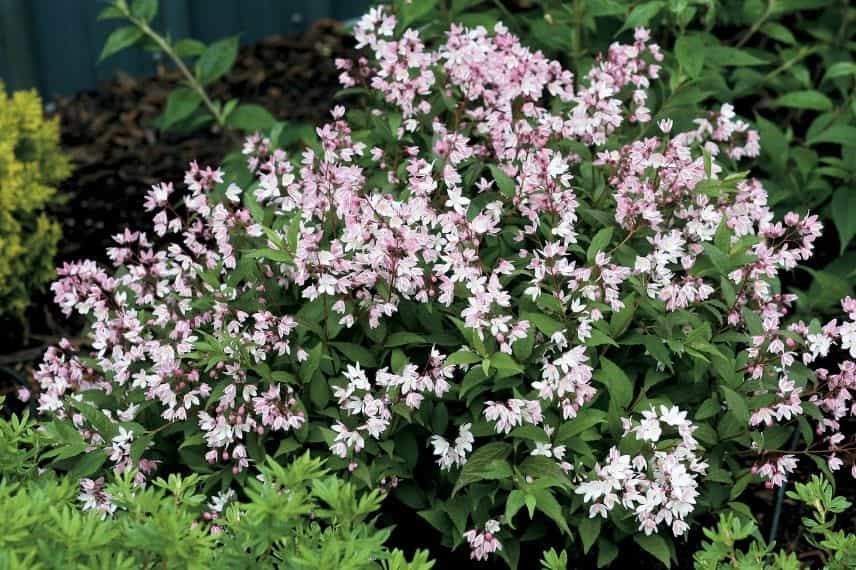
In an English garden
With its delicate white or pale pink flowers blooming at the same time as roses, deutzias are perfect for enhancing an English garden.
Smaller varieties, such as gracilis Nikko or Yuki Cherry Blossom, will fit perfectly into mixed borders, those flower beds composed of perennials. They can be paired with hardy geraniums like Johnson’s Blue and delphiniums. You can also add ornamental alliums or even the smaller Allium schoenoprasum, stachys, or even nepetas.
If you wish to create a transition between the mixed borders and larger shrubs, you can choose intermediate-sized varieties of deutzias, such as deutzia rosea Campanulata or deutzia hybrid Raspberry Sundae. They will pair beautifully with weigelas, not to mention roses! For example, the David Austin rose James Galway or the climbing rose Alchymist. This will give your garden a “So British” feel.
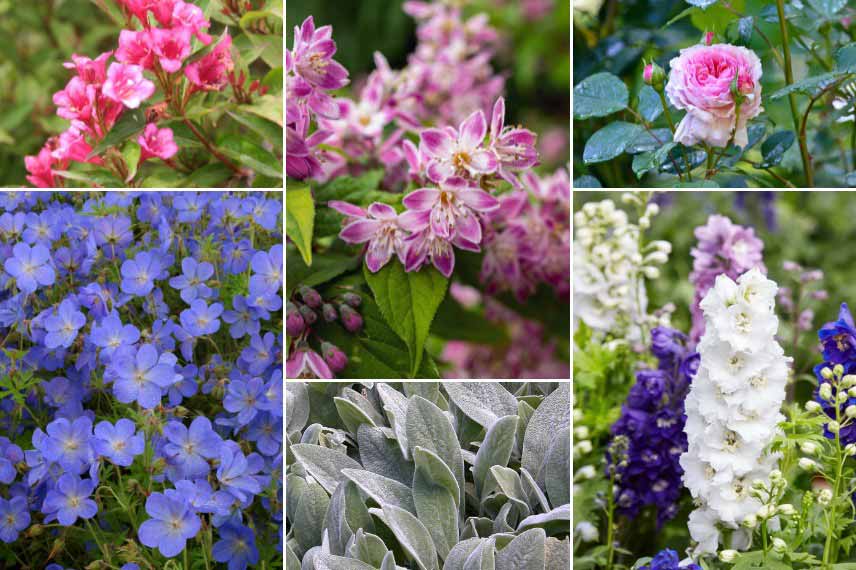
Weigela, Deutzia ‘Strawberry Fields’, Rose ‘James Galway’, Hardy Geranium ‘Johnson’s Blue’, Stachys byzantina, and Delphiniums
In a vicarage garden
The priest’s garden is renowned for hosting resilient plants that require little maintenance, which is the case with deutzia. With its abundant flowering, it will attract bees and other beneficial insects to the vegetable garden. To easily integrate it into this setting, smaller varieties should be preferred, such as deutzia Yuki Snowflake or Deutzia gracilis. The whiteness of its flowers will bring calm and rest to this garden where simplicity is key.
Deutzia can be placed near the vegetable patch where vegetable plants and herbs such as rhubarb, mint, rosemary, thyme, or even fennel thrive.
Deutzia will provide a simple and elegant cover at the base of apple trees and espaliered pear trees or columnar varieties. Its delicate white flowers will offer a lovely contrast to the red and black fruits of raspberries, blackcurrants, and grapevines.
It can also be given a central position in a flower bed, surrounded by lovely annual flowers such as marigolds, cosmos, nigella, and California poppies. The perennials of the priest’s garden are not to be overlooked, with options among hardy geraniums, bleeding hearts, lavender, phlox, and pinks.
Discover other Deutzia
View all →Available in 1 sizes
Available in 1 sizes
Available in 0 sizes
Available in 2 sizes
Available in 2 sizes
Available in 3 sizes
Available in 2 sizes
Available in 3 sizes
Available in 1 sizes
Available in 2 sizes
In a romantic garden
The romantic garden stands out for its abundance of flowers and the lightness it exudes. A pink or white deutzia will fit perfectly, with its profuse flowering of delicate blooms, giving it the appearance of a powdered cloud in spring. With exuberance allowed, you can choose any variety you like, such as the Mont Rose hybrid deutzia, which will reach 3 metres in height at maturity, the Lavender Time compact deutzia, smaller with its very romantic appeal, or the Deutzia scabra Plena, whose double white and pink flowers are delightful.
The rose will be the essential companion to accompany your deutzia in this romantic setting. We will favour old roses in shades of pink, for example, the Bonica bush rose, the gallica Versicolor old rose with its striated pink flowers, or the Coral Dawn climbing rose. Don’t forget the magnificent climbing clematis with their poetic flowers, such as the Blue Pirouette clematis or the White Arabella diversifolia clematis.
For shrubs, you can plant near your deutzia an elegant Marie Simon pallidus ceanothus, with its light and powdered flowering, or a Vanille Fraise paniculata hydrangea with its opulent white flowers mixed with pink and red.
For the most perfect romantic touch, you should pair the deutzia with spectacular flowering perennials, such as the Patricia hardy geranium, the Sorbet lactiflora peony, the La Chatelaine pink lupin, the Pacific Astolat delphinium, or even the Echinacea purpurea.
In a natural garden
In a natural garden, also known as a wild or country garden, we prefer plants with a natural appearance that require no care or maintenance. Resilient and easy to grow, deutzia meets all the criteria. It will add a touch of cheerfulness and refinement with its abundant flowering. Varieties with moderate growth, such as Deutzia gracilis or Deutzia rosea Campanulata, will bring a bright aspect that will contrast perfectly with a black elder, a purple hazel (Corylus maxima Purpurea), or even a Chinese pepper.
Its country look will blend beautifully with lamb’s ears (Stachys byzantina), heucheras in their various natural shades, yarrow, astilbes, black ophiopogons, verbena, and hardy geraniums, such as the variety Bob’s Blunder.
In sunny spots, we can add a bit of spice with the surprising river thistles and even wild teasels. And to finish beautifully, some tall Mohawk bee balms and delicate wood salvias will enhance this rural picture.
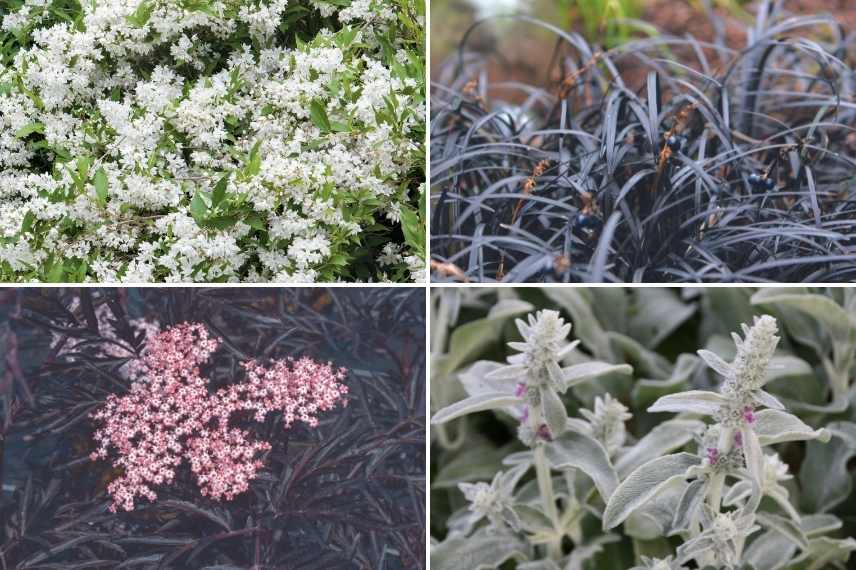
A natural garden – Deutzia gracilis, black elder, black ophiopogons and Stachys byzantina
In a free hedge
With its rustic charm, deutzia will be delightful in a low-maintenance informal hedge. With its bushy habit and abundant spring flowering, Deutzia elegantissima Rosealind or Deutzia Tourbillon Rouge will be perfect in a lovely medium-sized hedge (1.5m to 2m). To accompany them, alternate with weigelas, lilacs (syringa), brooms, kolkwitzia, physocarpus, and mock oranges.
To have a decorative hedge all year round, you can also add evergreen bushes such as abelias, berberis, eleagnus, cotoneasters, or even Mexican orange blossom.
To go further
- Find all our available Deutzia varieties
- Discover all our tips for growing a Deutzia in a pot
- Check out our advice on designing an English garden
- Browse our article on designing a cottage garden
- For inspiration, discover our romantic suggestions
- Find our planting advice for a living hedge
- Subscribe!
- Contents
![[deutzia_associate title="Related articles" number="3"]](https://www.promessedefleurs.ie/blogwp/wp-content/uploads/2021/07/Deutzia-Associer.jpg)































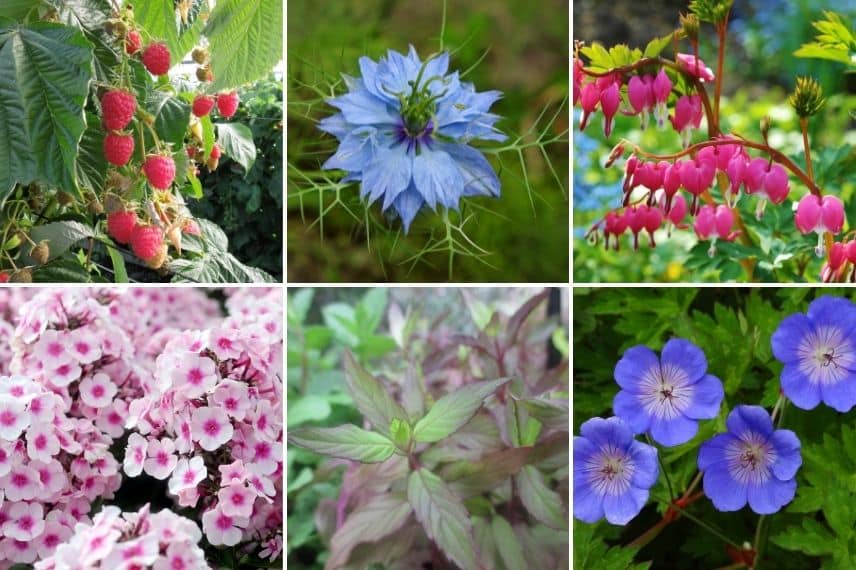

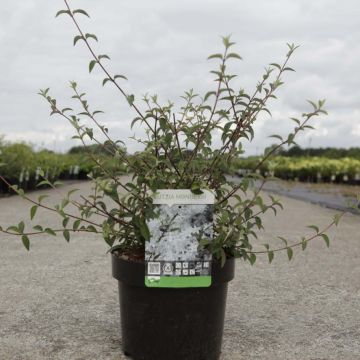
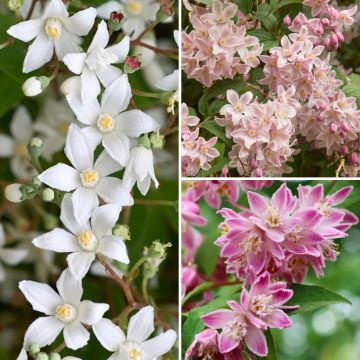

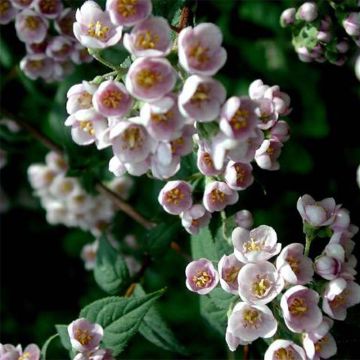
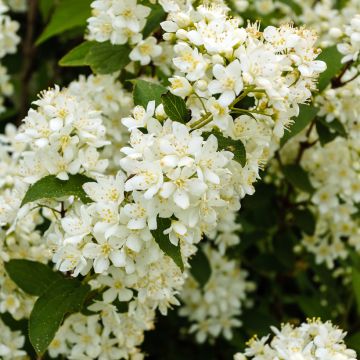
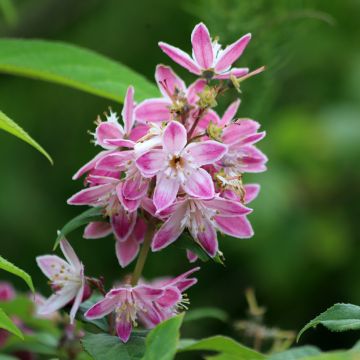

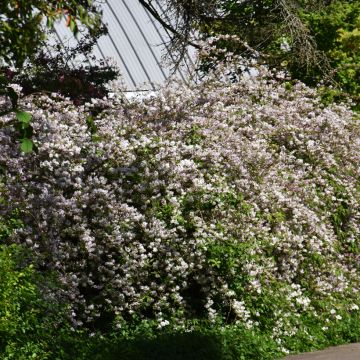
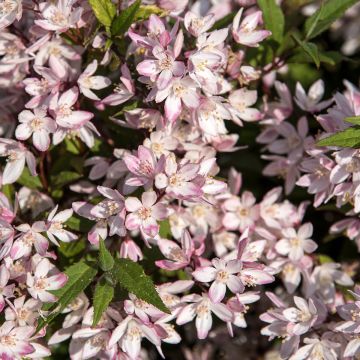
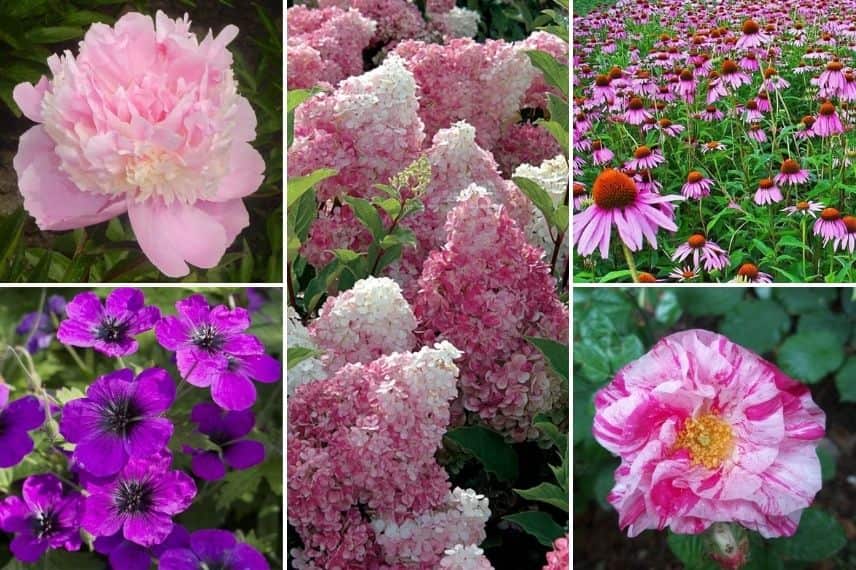
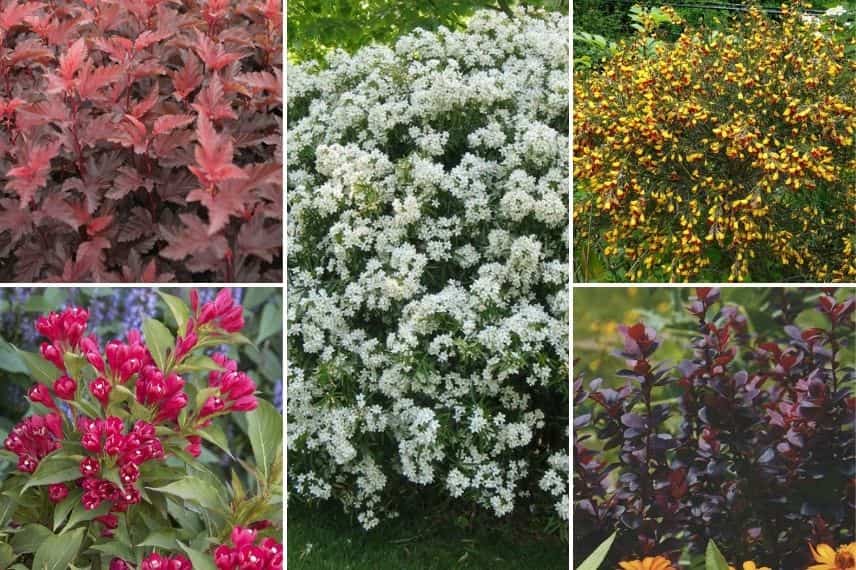
Comments